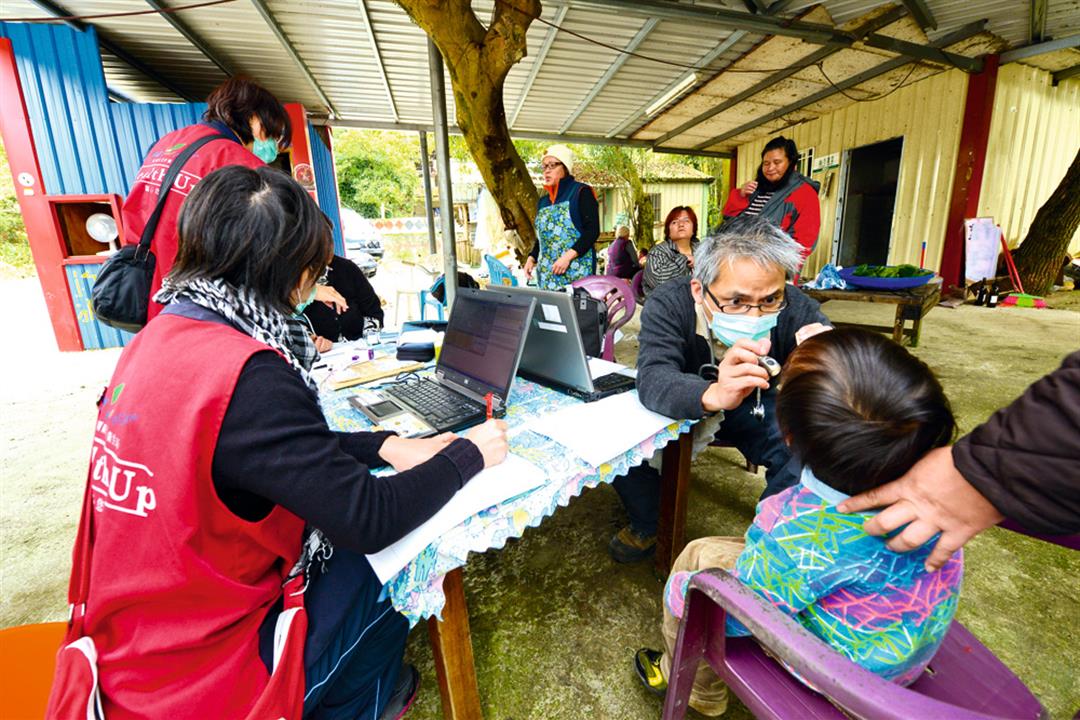A mountain miracle
It is a chilly 9° Celsius on Fuxing’s Mt. Lala in the early morning of New Year’s Eve. Mrs. Yang, an Atayal woman, awakens her son in their Hualing Village home, and reminds him he needs to see the doctor at school today. It’s important that he remember because today is the day the doctor from the PHC halfway down the mountain will be at the school.
For roughly 15,000 Fuxing residents, nearly 70% of whom are Atayal, the PHC is the most convenient place to see a doctor, pick up medications, have their infants inoculated, and get flu vaccines for the elderly. A trip down to the plains for care means a drive of at least two hours. To make it a bit easier for township residents to receive care, one of the PHC’s doctors makes rounds of its 10 villages while the other holds down the fort at the PHC itself.
At just past 8 a.m., the PHC is already busy. Employees are loading the supplies they’ll need for their “rounds” into the center’s service vehicle. These include several boxes of pharmaceuticals and examination equipment, and three notebook computers, one each for registrations, examinations, and prescriptions. All of this gear enables examinations to be carried out just as they would be at a major hospital.
Today, Dr. Lin Dewen, an internist and the director of the Fuxing PHC, will be making the rounds. On the road by 8:30 with two nurses and a pharmacist, the team will be visiting Yeheng, a hamlet under the jurisdiction of Sanguang Village, and Guanghua, a hamlet administered by Huling Village, the two most remote sites on the Fuxing Township medical circuit.
Once they enter a hamlet and get connected to the network, the remoteness and 600 or 700-meter difference in altitude cease to be hindrances to care. Instead, the network provides the doctor with instant access to patient records on the center’s servers, and the ability to update them with any diagnoses and prescriptions made today.
“This is our ‘little cloud,’” says Dr. Lin, himself an Atayal from Lishan, Taichung. His “little cloud” is a system that enables the laptops making the rounds to share medical records with the center’s servers.
Lin and his colleagues continue their rounds of Fuxing’s mountain hamlets after the New Year’s holidays are over, again making use of their “little cloud.”
In the examining room in Kuihui Village, a Ms. Lin makes an appointment for her four-year-old son to get a vaccination, while Li A-mei, a 77-year-old diabetic, drops in to have her blood tested and pick up her medications.
The medical team’s next stop is Gaorao, a Changxing Village hamlet that’s about 50 minutes by car from the PHC. Here they see the 80-year-old Grandma Ceng, who has come in for the results of a blood test, and a Mrs. Huang, who moved back to the hamlet seven years ago and has come to have her grandson, who has a runny nose, looked at. Since she’s already here, Mrs. Huang also plans to have her blood pressure checked. With the help of a 3G network card and the “little cloud,” Dr. Lin enters all of his notes directly into his patients’ records.
Dr. Lin’s “little cloud” has now been in operation for about four years.

One doctor, two nurses and three laptop computers… The Fuxing Township Public Health Center medical team utilizes cloud technology to access the medical resources of the plains while making the rounds of remote villages.